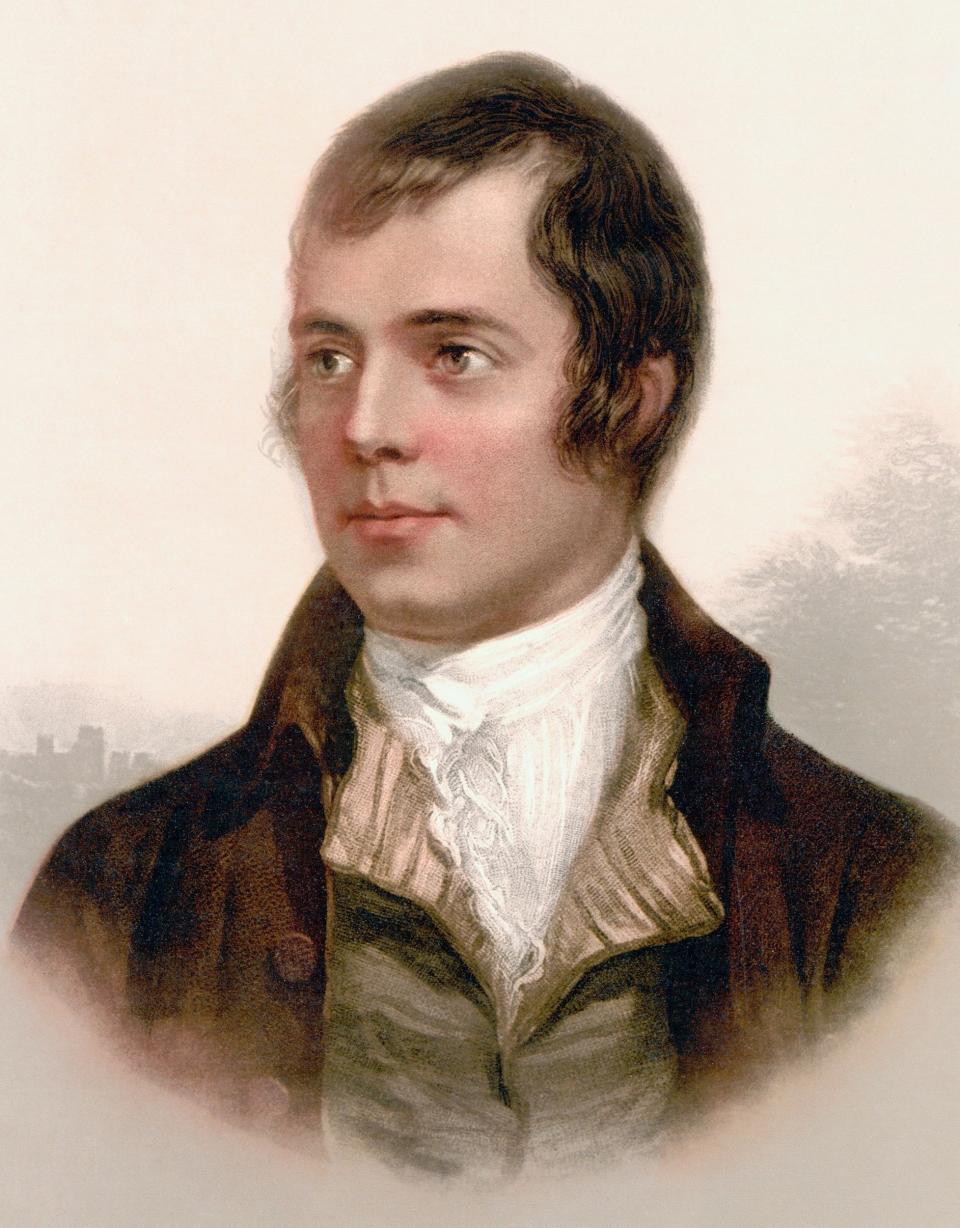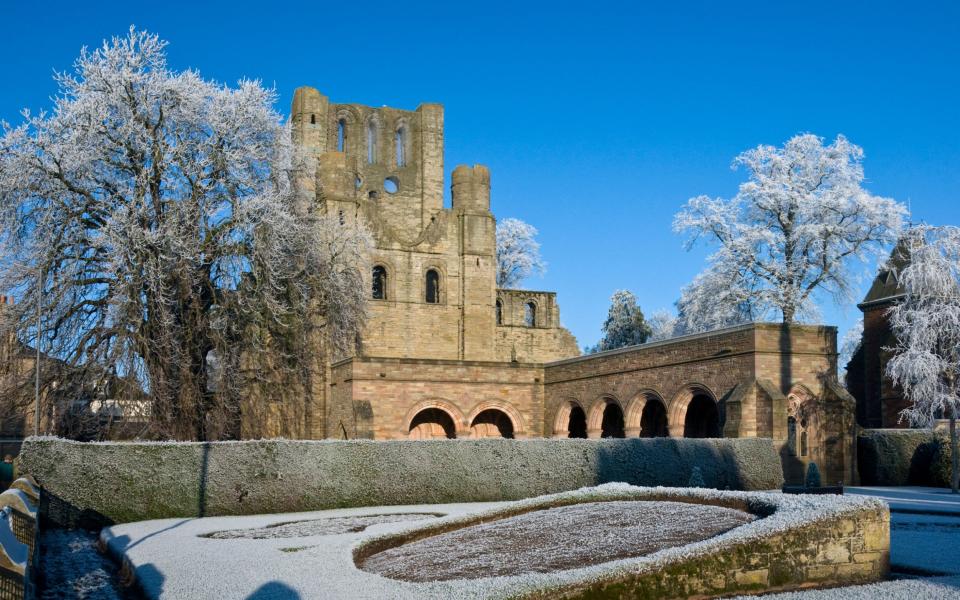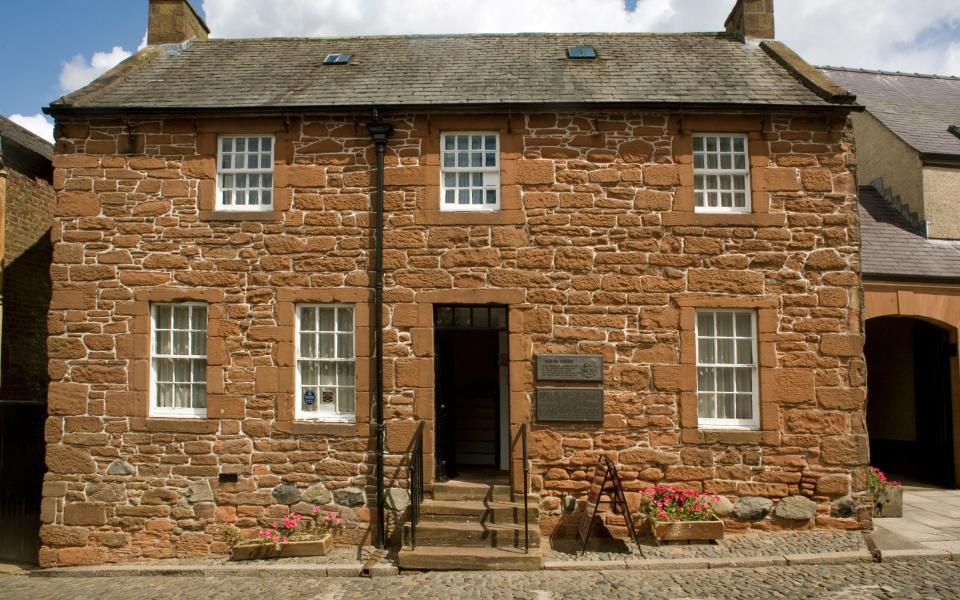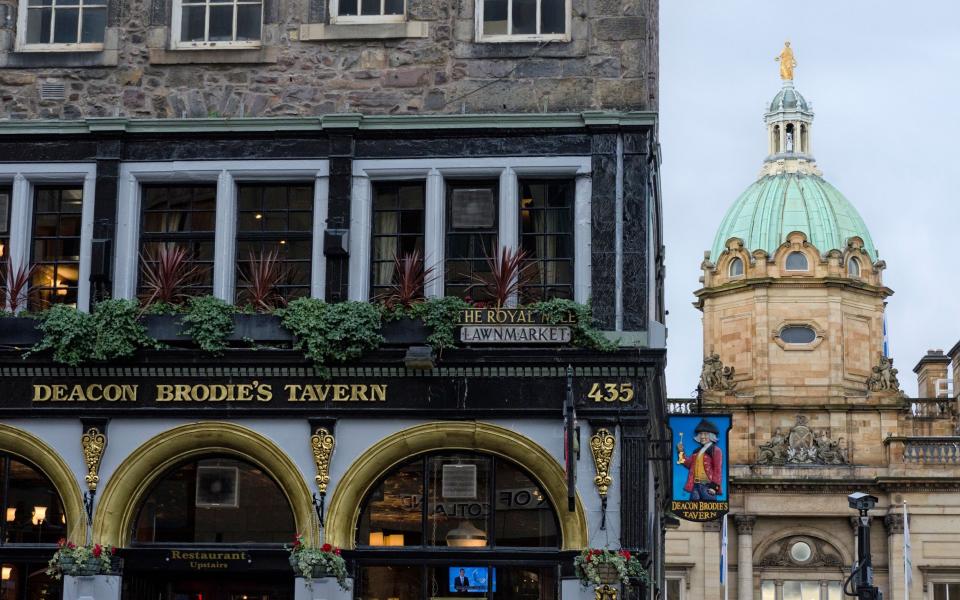There’s something about Robert Burns. More statues have been erected around the world for Scotland’s national poet than for any other literary figure, and he wrote perhaps the world’s most famous song: the global New Year’s anthem and ringtone earworm Auld Lang Syne. Not bad for a man born into poverty in Ayr in 1759.
But maybe it was because Burns was a dreamer who fought for everything he was never given. He was also a prolific philanderer (he fathered at least a dozen children), a devoted drinker and a passionate advocate of Scottish independence. But above all, he was an idealistic internationalist whose firm belief that “A Man’s a Man for A’ That” shone through his work, both in English and in his Scottish homeland.


There’s only one place where you can delve deeper into the Bard’s life: the simple thatched cottage where he was born on January 25, 1759 in the small Ayrshire village of Alloway, now a museum. Much of the village is dedicated to Burns; it’s a kind of literary time warp wrought in stone. An umbrella website from the National Trust for Scotland brings together all the attractions; Conveniently, they are all easily accessible on foot.
The ‘Poet’s Path’ – enlivened with sculptures and characters from Burns’ poems – leads from the Burns Cottage to the sparkling modern Burns Museum, which is beautifully done.
The main displays are all written in Scots and English translations are available; the superiority of Scots causes visitors to regard Scots as a separate language in a way that Burns would undoubtedly have been enthusiastic about. Don’t miss the café, where visitors can enjoy a Burns supper, while aspiring young poets can play outside in the replica Burns Cottage playhouse.


Nearby is the 21-meter-high Burns Monument, which overlooks a well-tended rose garden (a favorite flower of Burns). Designed by Sir Thomas Hamilton Junior in the 1820s, the monument’s nine pillars represent muses from Greek mythology; a nod to how Burns drew as much inspiration from the Classics as from Mother Nature.
Following in the footsteps of Tam o’Shanter (the title character of one of his greatest poems) leads visitors to the ruined Alloway Auld Kirk and on to the original Brig o’Doon. This stone arch bridge has been saved from demolition a number of times and has changed little since Burns walked across it every day with his father on the way to work. Walking on the cobblestones is literally following in the poet’s footsteps.
For Burns fans looking for even more local attractions, there’s Souter Johnnie’s house in Kirkoswald, the workshop of an 18th-century shoemaker immortalized in Tam o’Shanter.
Other Burns attractions in Ayrshire include the Bachelors’ Club in Tarbolton, where Burns is said to have learned to ‘dance and debate’ – the ’10 Rules of Membership’ were drawn up by Burns. Then there’s the Burns House Museum in Mauchline, where Robert Burns lived and worked between 1784 and 1788.


Because his legacy is written all over the south of Scotland, plotting a route can be almost as tricky as trying to translate his Scots into English without losing the compelling romance.
Luckily, a new 200-mile Burns Trail has just been announced, taking travelers on a six-day adventure from Eyemouth, on the east coast, across part of the Borders to Dumfries in the west. Inspired by Burns’ tour of southern Scotland in 1787, this driving route calls on the trio of romantically ruined abbeys at Kelso, Jedburgh and Melrose that captured his imagination before he drove west to Dumfries and Galloway.
Ayrshire will always be Burns’ country, but the historic market town of Dumfries was where he spent his later years. After struggling for years to become the self-taught tenant farmer he dreamed of at Ellisland Farm (open to the public as a modest museum just north of Dumfries) and praised in his writing, he retired to Dumfries, and the town is now as essential a stop for Burns devotees as Alloway.
The Burns House, where he lived from 1791 until his death in 1796, is a must. In this simple sandstone mansion you can admire the famous Kilmarnock and Edinburgh editions of his work, as well as the simple study in which he wrote some of his best-loved poems.


Another essential is the The Globe Inn – this may have been recently renovated, but Burns’ verses are still etched into the windows and the tradition continues that if a visitor cannot recite Burns in his old chair, he must go for the round must pay. Either way, there’s no better place to bring a little drink to the man himself.
From the Globe Inn, the Robert Burns Trail winds around the market town of Dumfries and crosses the River Nith, as Burns himself would have done when working as an excise worker. The path passes his statue in the pedestrianized heart of the city, then delves into his story again at the Robert Burns Center, a popular cinema with a Burns exhibition.
A natural end to the walk is St Michael’s Kirkyard, where the poet was buried after dying of rheumatic fever at the age of 37. He now lies in the specially commissioned Burns Mausoleum, next to his widow, Jean Armour, and five of their children. It wasn’t always that way: before it was moved in 1817, it was originally buried under a simple, inconspicuous stone – an inappropriate tribute that Burns admirers and pilgrims William and Dorothy Wordsworth looked at in horror when they visited.


A Burns-inspired pilgrimage to Edinburgh is also planned. Not that the Scottish capital has always embraced the man: the city high mouth of the day were often too shocked by his radical nationalism and womanizing ways to fully recognize his talent during his lifetime. But he certainly left his mark on the city, settling down with a drink at the White Hart Inn, on the cobbled Grassmarket, where Burns held court within sight of the city’s gallows, or heading to one of his other haunts, the Deacon Brodie’s Tavern. on the Royal Mile. The Edinburgh Literary Pub Tour weaves together stories of Burns with pit stops at some of the city’s most legendary pubs.
The Writers’ Museum, meanwhile, houses a respected collection of works, manuscripts and personal objects by Robert Burns, as well as portraits and a desk from his home in Dumfries. But perhaps the most famous of all his images hangs in the Scottish National Portrait Gallery, brilliantly captured by his friend and fellow radical Alexander Nasmyth. It’s a stirring, dramatic portrait to which Burns himself would undoubtedly have raised a glass – in the interests of Auld Lang Syne, of course.